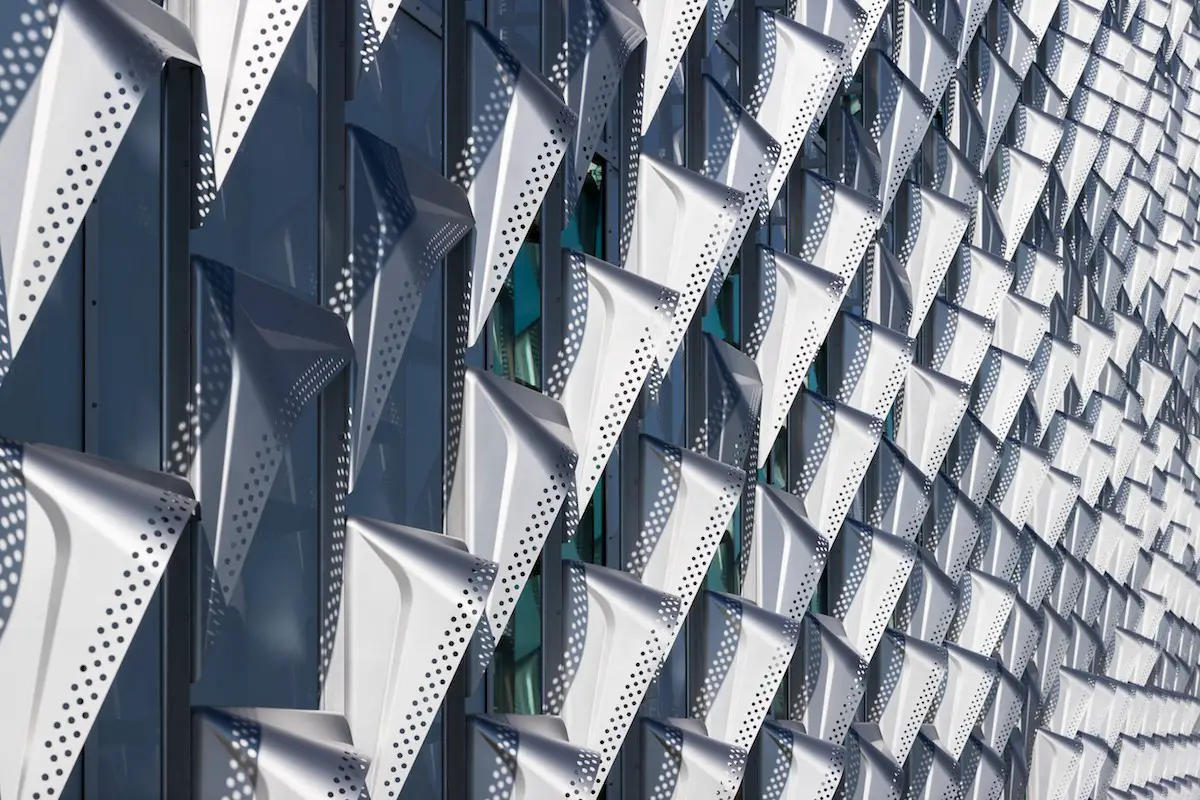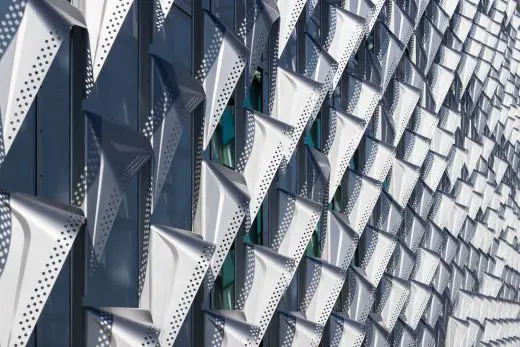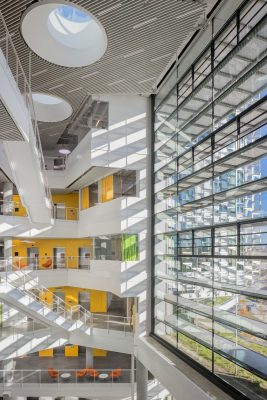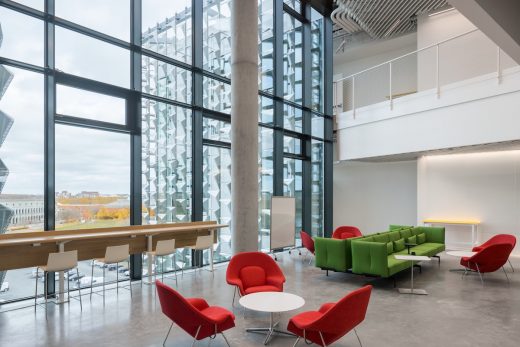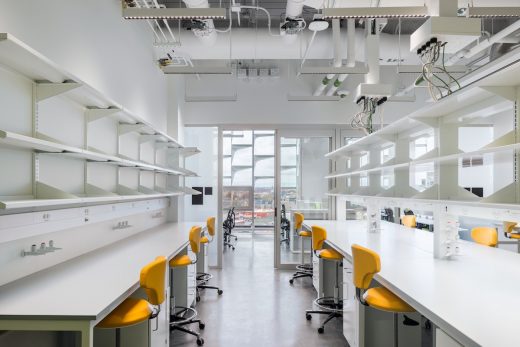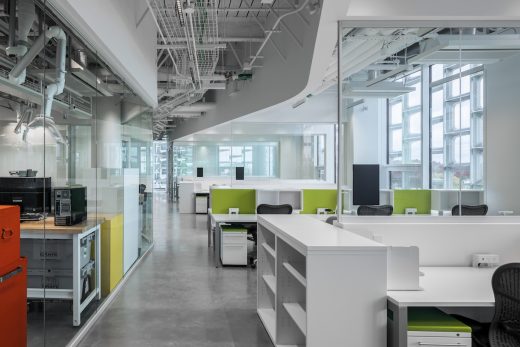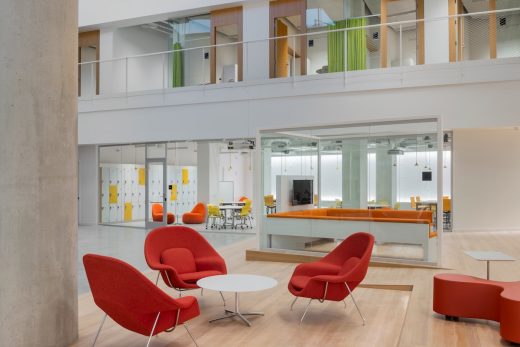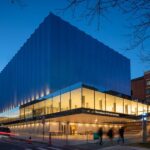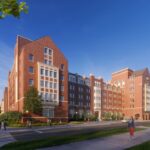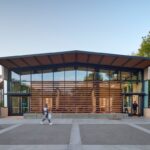Harvard University Science and Engineering Complex Boston, Contemporary Massachusetts building
Harvard University’s new Science and Engineering Complex (SEC)
May 27, 2021
Location: 150 Western Avenue, Cambridge, Boston, Massachusetts, United States of America
Design: Behnisch Architekten
Behnisch Architekten and Harvard University Redefine Scientific Scholarship
with World-Class Research Complex
The renowned university and pioneering architecture firm team up on a groundbreaking project designed for cutting-edge pedagogy and research in a highly sustainable building that reflects the future of science.
Harvard John A. Paulson School of Engineering and Applied Sciences:
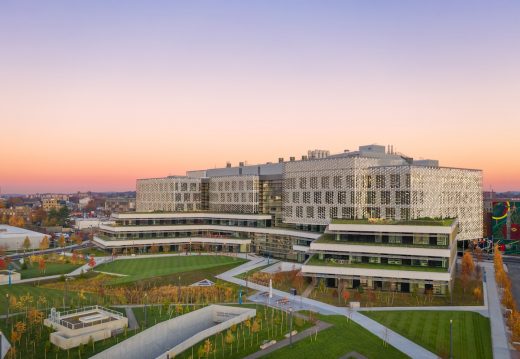
Photos by Brad Feinknopf
Harvard University Science and Engineering Complex Building, Boston, MA
BOSTON, MA—Harvard University’s new Science and Engineering Complex (SEC), designed by Behnisch Architekten, has just been completed and will open its doors to students in the fall of 2021. Located directly across the Charles River from Harvard’s historic Cambridge campus, the SEC is the University’s latest significant addition to its Allston campus.
Its diverse mix of labs and collaborative spaces also furthers a robust culture of interdisciplinary work. The SEC’s cutting-edge laboratory space, generous approach to collaborative environments and innovative, high-performance façade support the research of some of Harvard’s most translational innovators as they work on visionary projects inside the building, such as flying and swimming microbots, wearable robotics, data privacy tools, novel drug delivery platforms, and brain-electronic interfaces, to name a few.
A landmark design for transformational learning
The eight-level, 544,000-square-foot building is situated on a primary thoroughfare connecting the Boston neighborhood of Allston to Cambridge. Highly visible makerspaces and teaching labs located at street level showcase the exciting work being done at the school, further connecting the academic and Allston communities. The vibrant public spaces at a variety of environments and scales incorporate the structure into the fabric of the neighborhood. The lower floors of the building embrace an extensive landscaped Engineering Yard intended for both ceremonial as well as recreational activities.
Reflecting the dynamic, interdisciplinary nature of both teaching and research, the SEC is designed to act as a “lab for learning” that encourages collaboration. Classrooms, teaching labs, and amenity spaces occupy the lower floors. They vary in size and layout, ranging from typical, theater-style classrooms with sloped floors and fixed seating to active-learning spaces that can be easily reconfigured to allow for flipped classroom models and student-led discussions. Two glazed, multi-story atria provide light-filled social hubs for faculty, students, and staff, creating linkages and encouraging cross-disciplinary work among more than 450 engineering and applied sciences researchers in residence.
Diversity in research
Home to a major portion of the Harvard John A. Paulson School of Engineering and Applied Science (SEAS), the SEC houses a multitude of lab and core science facilities for research that will benefit society in numerous ways, strengthening Harvard’s and Greater Boston’s place as the global epicenter for the life sciences and a major center of excellence in engineering and technology. The faculty and students occupying the SEC’s offices, makerspaces, and wet and dry labs work in diverse fields, including robotics, bioengineering, computer science, materials science, electrical and mechanical engineering, and more.
The upper floors house 69,120 square feet of open wet research laboratory space accommodating biological, chemical, physical, optical, and electronics activities, as well as 24,000 square feet of dry research laboratories for computer science researchers. Modular, flexible laboratory environments, smart zoning of highly ventilated zones from dry space, and centralized lab services ensure the future adaptability and flexible evolution of laboratory space as research directions change. The upper stories are clad in a façade whose layered design celebrates and calibrates the scale of the large volumes that comprise the research activities of the building, creates an identity for the complex, and plays a crucial role in the efficient energy performance of the building as well as ensuring occupant comfort.
The healthiest building on the Harvard campus
Charged with making the SEC the “healthiest building on the Harvard campus,” the Behnisch team reinforces Harvard’s robust commitment to sustainability with a design that has earned both LEED Platinum and Living Building Challenge (LBC) Petal certification in Materials, Beauty, and Equity. Unprecedented for a building of this size, the LBC Materials Petal attests that the building has been constructed with healthier materials that are free of key harmful chemicals and comply with both the LBC Red List and meet the rigorous requirements of Harvard’s Healthier Building Academy, a partnership among faculty from SEAS, the Harvard T.H. Chan School of Public Health, Harvard Medical School, and the Harvard Office for Sustainability.
To set a design precedent for further local development as well as advance sustainability goals, the SEC’s design combines performance and aesthetics. Behnisch custom-designed the world’s first hydroformed tensile façade system that significantly reduces solar gain at glazed openings and enables the use of low-energy, high-comfort radiant systems for interior climate conditioning. The design team also incorporated water-based heating and cooling systems that use one-third the energy of comparable air-driven systems, large glass atria and highly glazed interior partitions that transmit daylight deep into the heart of the building, and five acres of vegetated roof terraces.
Beyond its immediate function, the project addresses several threads of contemporary life which will influence future generations: engineering’s decisive influence on the discovery and mitigation of some of the world’s most pressing problems, the critical importance of cross-disciplinary efforts to achieve major research advances, and genuine leadership in sustainable design and urban development.
Behnisch Architekten
Founded in 1989, Behnisch Architekten is an award-winning, internationally recognized cross-disciplinary architecture firm. From the beginning, the social dimension of architecture has been a fundamental aspect of the firm’s design philosophy. Behnisch Architekten’s search for innovative and sustainable solutions, while making optimum use of natural resources, has produced a rich variety of buildings, each of which responds to specific user requirements and site conditions.
In the higher education and laboratory sectors, these include the John and Frances Angelos Law Center at the University of Baltimore (LEED Platinum), the Bogomolny Library at the University of Baltimore (LEED Gold), the Karl Miller Center at Portland State University (LEED Platinum), the Genzyme Center in Cambridge, MA (LEED Platinum), and the Vagelos Laboratory for Energy Science and Technology at the University of Pennsylvania, a project that will extensively employ passive low-energy design strategies in pursuit of the school’s goal of carbon neutrality (2024).
Behnisch Architekten has offices in in the United States in Boston, Massachusetts and Los Angeles, California and in Stuttgart and Munich, Germany. The firm’s projects are widely published and exhibited worldwide, and its staff members are actively engaged in architectural education and are regular lecturers at top universities and conferences.
Photographs: Brad Feinknopf
Harvard University Science and Engineering Complex images / information received 270521
Previous news about this building on e-architect:
Harvard University Science and Engineering Complex
Location: 150 Western Avenue, Boston, MA, USA
Harvard University Buildings
Harvard University Northwest Science Building, Massachusetts
Design: Skidmore Owings Merrill
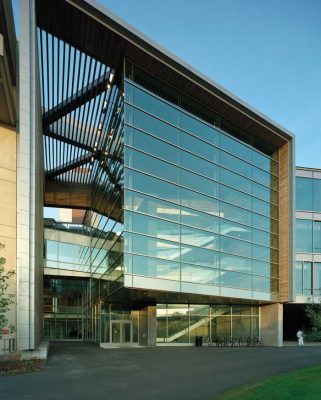
photo courtesy of SOM © Timothy Hursley
Harvard University Northwest Science Building
Harvard University Graduate Housing, Massachusetts
Kyu Sung Woo Architects
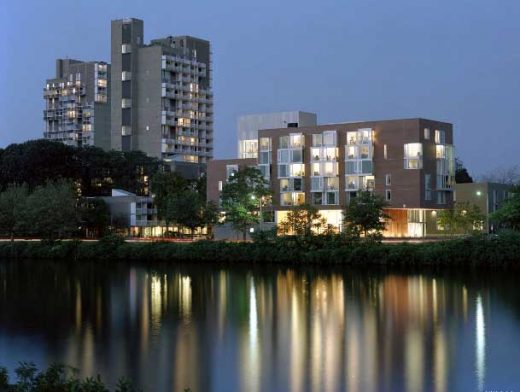
photo : Timothy Hursley, The Arkansas Office
Harvard University Graduate Housing
Website: Harvard John A. Paulson School of Engineering and Applied Sciences
Harvard Graduate School of Design (GSD) in England
Boston Architecture
Boston Architecture Design – chronological list
New Buildings in Boston
, Massachusetts, USA
Design: Elkus Manfredi Architects
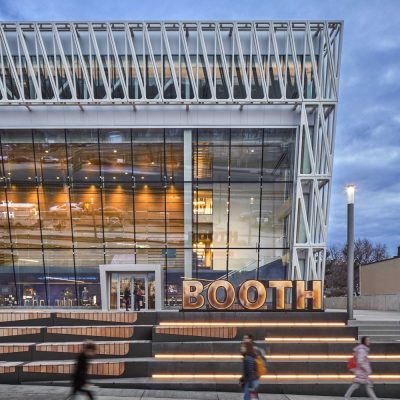
photo © Robert Benson
Joan & Edgar Booth Theatre and the College of Fine Arts Production Center Boston University Building
Pier 4 Office Building
Design: Elkus Manfredi Architects
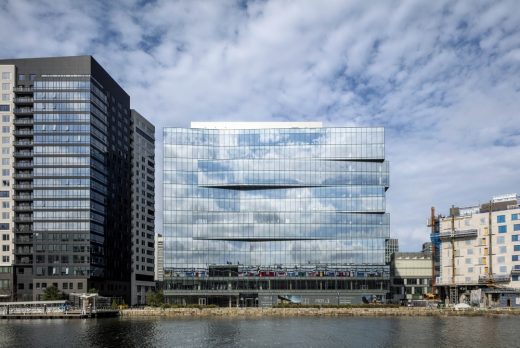
photo © Magda Biernat
Pier 4 Office Building
Design: Glen and Co. Architecture
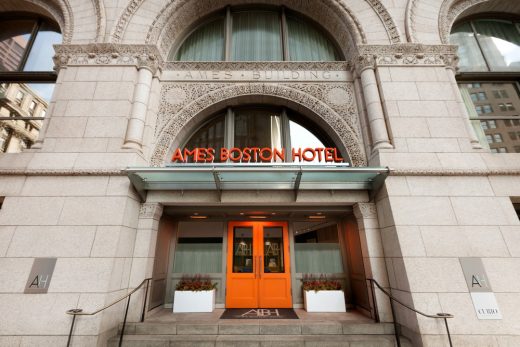
photo courtesy of architects
Ames Boston Hotel Building
Design: Ennead Architects
Massachusetts College of Art and Design Design and Media Center Building
Comments / photos for the Harvard University Science and Engineering Complex design by Behnisch Architekten page welcome.

